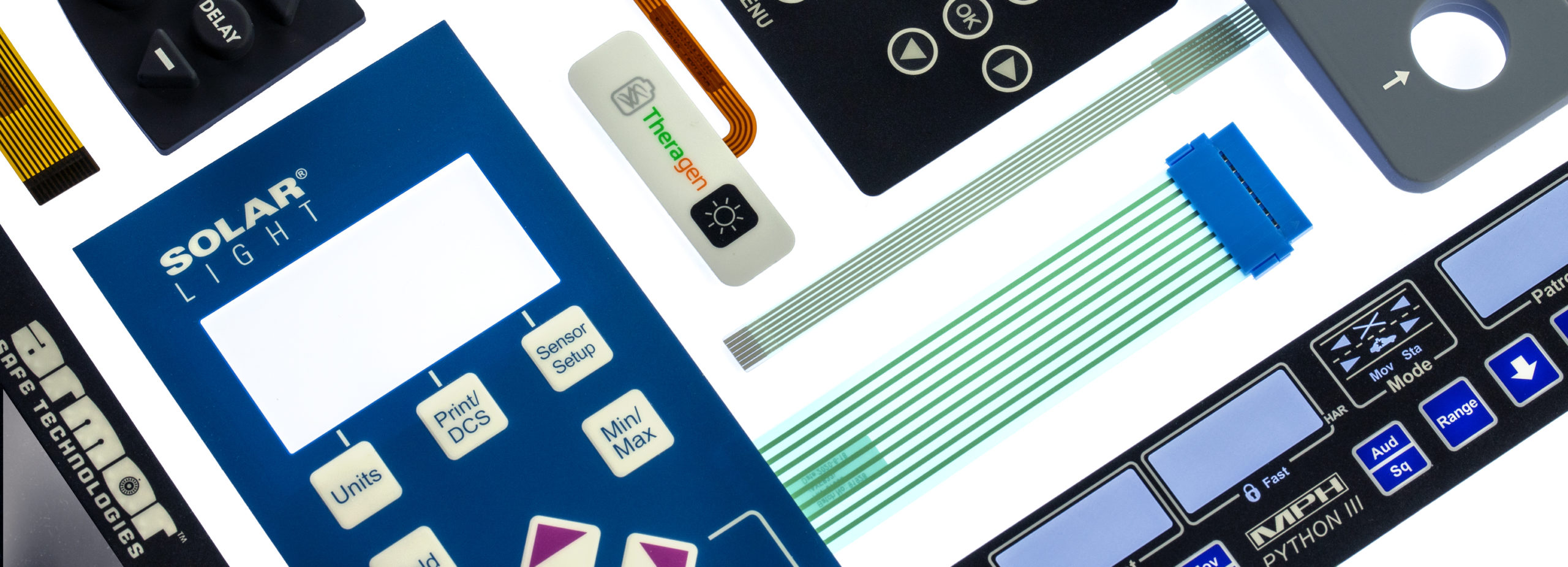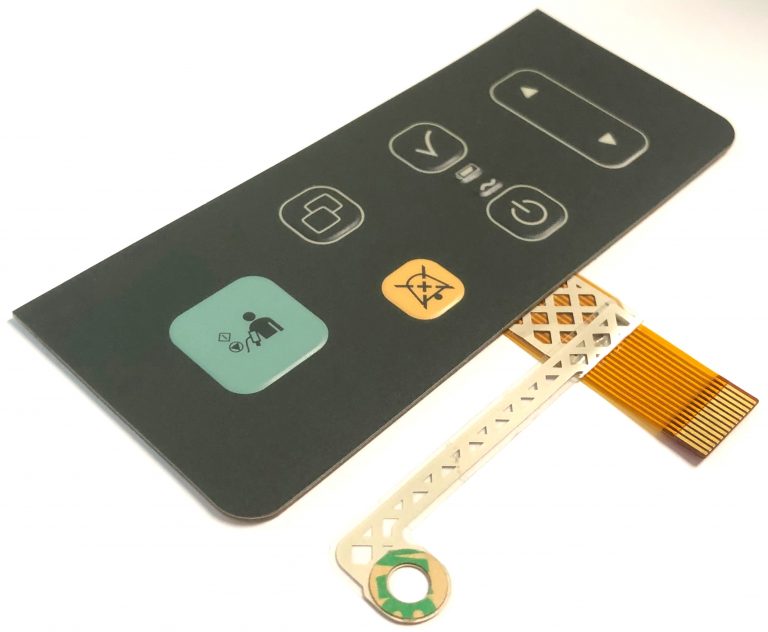When special application needs arise, a specialized membrane switch manufacturer is the ideal choice.
All About Membrane Change: Comprehending Its Design and Functionality
When you think about the control user interfaces in modern-day tools, membrane layer buttons frequently come to mind. Let's discover what sets membrane changes apart from other control systems.
What Are Membrane Switches?

Their seamless nature makes them easy to clean and resistant to dirt and dampness, an essential attribute in many settings. Membrane switches can additionally be personalized concerning shape, size, and graphics, enabling producers to create one-of-a-kind user interfaces customized to particular items. And also, they're light-weight and slim, which helps in decreasing the general bulk of gadgets. In general, membrane switches play a significant duty in improving user experience across a broad range of applications.
How Membrane Switches Over Work
When you press a secret on a membrane layer button, it triggers a simple yet efficient system. membrane switch manufacturer. The leading layer, typically made of versatile product, pushes down onto a conductive layer beneath it.
You'll discover that the tactile responses differs based upon the button design, using either a soft click or a much more pronounced action. As soon as you launch the trick, the membrane layer go back to its original placement, resuming the circuit and quiting the signal. This process occurs virtually instantly, guaranteeing a responsive customer experience.
Membrane buttons are popular due to their longevity and resistance to dirt and moisture, making them suitable for numerous applications, from home appliances to clinical devices. Comprehending this operation assists you appreciate their extensive use.
Key Elements of Membrane Layer Switches
Understanding the crucial elements of membrane layer switches is basic for grasping their functionality and layout. The protective layer shields versus environmental aspects and wear, prolonging the switch's lifespan. By understanding these parts, you'll gain insight into how membrane layer switches operate and their importance in various applications.
Products Made Use Of in Membrane Switch Design
The performance and sturdiness of membrane switches greatly depend upon the materials utilized in their design. You typically come across polyester and polycarbonate as key substratums due to their superb strength and versatility. These materials stand up to scrapes and chemicals, making them optimal for demanding atmospheres.
The conductive layers often utilize silver or carbon, picked for their dependability and conductivity. membrane switch manufacturer. Silver offers superior performance, while carbon is an affordable alternative. For the overlay, you could consider a matte or shiny surface, depending on your aesthetic needs and user experience
Adhesives play an essential role too; they bond layers securely and assure durability. Ensure to choose adhesives that stand up to ecological elements like temperature and moisture. Do not neglect the value of a great printing method for graphics, as it improves both performance and aesthetic charm. Selecting the right materials will certainly assure your membrane layer button stands the test of time.
Design Considerations for Membrane Buttons
While creating membrane buttons, it's essential to consider numerous published here elements that influence their functionality and customer experience. Begin by concentrating on the format and button size; make certain they're intuitive and simple to navigate. Think about the tactile comments you want to give-- will individuals need a noticeable click or a softer touch? Additionally, believe regarding the materials you'll use, as they'll impact toughness and aesthetic appeals.
Validate your style suits environmental aspects, like dampness or temperature variations, which can affect efficiency. By carefully thinking about these components, you'll create a membrane layer button that boosts use and complete satisfaction.
Applications of Membrane Switches
Membrane layer buttons are functional parts found in various applications, from commercial equipment to customer electronic devices. You'll see their influence in equipments that need durable user interfaces and in gadgets that take advantage of smooth layouts. Understanding these applications aids you appreciate the performance and usefulness of membrane layer switches in daily technology.
Industrial Devices Usage
When you're wanting to boost the functionality of industrial equipment, membrane buttons supply a trustworthy remedy that combines toughness with easy to use layout. These switches are best for extreme environments, supplying resistance to dirt, dampness, and chemicals. You'll discover them in control panels for producing makers, heating and cooling systems, and clinical devices, where precision and responsiveness are essential. Their low account implies they fit perfectly right into various devices, saving important space while keeping simplicity of use. With personalized graphics and backlighting alternatives, you can develop an user-friendly user interface for drivers, improving efficiency and safety and security. And also, their lengthy lifespan minimizes maintenance expenses, making them a smart investment for your commercial applications. Embrace membrane layer buttons to improve your operations and enhance total efficiency.
Consumer Electronic Devices Assimilation
In the domain of consumer electronics, membrane layer buttons play an essential function in boosting user communication and tool capability. Membrane layer switches also guarantee durability and resistance to dirt and dampness, expanding the life expectancy of your electronics. By choosing membrane layer buttons, you enhance not simply the performance yet likewise the design of your devices, making everyday communications smooth and enjoyable.
Benefits and Downsides of Membrane Switches
While membrane layer buttons use a range of benefits, they likewise feature some disadvantages that you should consider. dig this One considerable benefit is their compact design, making them excellent for space-constrained applications. They're additionally affordable, supplying a durable remedy with a low production price. In enhancement, their seamless surface area is simple to tidy, boosting health in atmospheres like hospitals.

Membrane layer buttons can have a much shorter life-span compared to mechanical switches, specifically under heavy usage. They can additionally be less responsive, which might impact user feedback throughout operation. Balancing these pros and disadvantages will assist you identify if membrane layer buttons are the appropriate fit for your task.
Frequently Asked Inquiries
The Length Of Time Do Membrane Layer Switches Over Typically Last?
Membrane changes usually last between 5 to ten years, relying on use and ecological problems. You'll want to examine elements like wear, exposure to wetness, and temperature fluctuations to determine their durability successfully.
Can Membrane Layer Switches Over Be Customized for Details Layouts?
Yes, you can personalize membrane layer buttons to fit details designs (membrane switch manufacturer). You'll have the flexibility to pick colors, shapes, and designs that match your job's demands, ensuring they mix seamlessly with your overall aesthetic
What Is the Price Array for Membrane Change Production?
The cost range for membrane layer button manufacturing normally falls in between $1 and $10 per system, depending on variables like design intricacy, quantity, and products. You can get quotes from producers to find the most effective choice.

Are Membrane Layer Changes Water-proof or Immune?
Membrane layer buttons can be developed to be water resistant or resistant, depending upon materials used and building methods. If you require them for wet settings, ensure you specify those requirements during the design procedure.
How Do Membrane Changes Compare to Standard Buttons?
Membrane layer switches are usually thinner and more versatile than this website traditional buttons, supplying a sleek style. They're typically much easier to clean up and integrate, yet might not supply the tactile comments you're utilized to with mechanical choices.
Verdict
